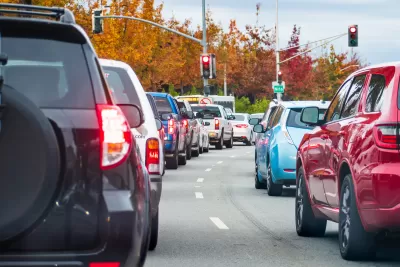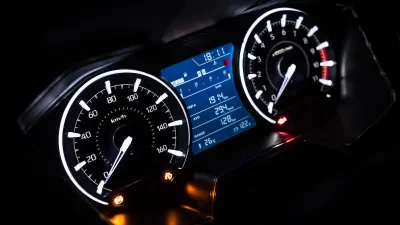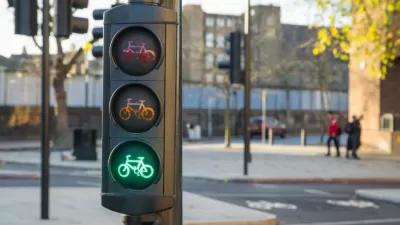Density, weather, and access to public transportation systems play a key role in how many miles are driven in the country’s 50 largest metro areas.

A recent analysis from Replica looked at 2023 data from the 50 largest metro areas in the United States and ranked them by 3 key metrics, including vehicle miles traveled per capita, walking mode share, and daily travel minutes for capita.
The highest levels of daily driving — which also correspond with some of the lowest numbers of trips taken via walking, according to the same analysis — occurred in Southern cities with lower density that lack robust public transportation systems and where summer weather is often too hot and humid for comfortable outdoor travel. The study also found that metro areas with greater population density largely had lower daily travel times compared to lower-density metro areas.
10 Metro Areas with Highest VMT Per Capita
- Raleigh, NC: 38.1 miles per weekday
- Birmingham-Hoover, AL: 36.1 miles per weekday
- Jacksonville, FL: 36 miles per weekday
- Nashville, TN: 35.5 miles per weekday
- Charlotte, NC: 35.5 miles per weekday
- Richmond, VA: 35.5 miles per weekday
- Memphis, TN: 35.2 miles per weekday
- Atlanta, GA: 33.6 miles per weekday
- St. Louis, MO: 32.7 miles per weekday
- Oklahoma City, OK: 32.5 miles per weekday
10 Metro Areas with Lowest VMT Per Capita
- New York City, NY-NJ-PA: 14.4 miles per weekday
- Philadelphia, PA: 21.1 miles per weekday
- San Francisco-Oakland, CA: 21.7 miles per weekday
- Chicago, IL: 21.8 miles per weekday
- Boston, MA: 22.8 miles per weekday
- Seattle, WA: 22.9 miles per weekday
- Portland, OR: 23.3 miles per weekday
- Las Vegas, NV: 23.6 miles per weekday
- Miami, FL: 23.7 miles per weekday
- Los Angeles, CA: 24.2 miles per weekday
FULL STORY: 2023 MSA Rankings

Manufactured Crisis: Losing the Nation’s Largest Source of Unsubsidized Affordable Housing
Manufactured housing communities have long been an affordable housing option for millions of people living in the U.S., but that affordability is disappearing rapidly. How did we get here?

Americans May Be Stuck — But Why?
Americans are moving a lot less than they once did, and that is a problem. While Yoni Applebaum, in his highly-publicized article Stuck, gets the reasons badly wrong, it's still important to ask: why are we moving so much less than before?

Research Shows More Roads = More Driving
A national study shows, once again, that increasing road supply induces additional vehicle travel, particularly over the long run.

Judge Halts Enforcement of Anti-Homeless Laws in Grants Pass
The Oregon city will be barred from enforcing two ordinances that prosecute unhoused residents until it increases capacity and accessibility at designated camping sites.

Advancing Sustainability in Los Angeles County Schools
The Los Angeles County Office of Education’s Green Schools Symposium brings together educators, students, and experts to advance sustainability in schools through innovative design, climate resilience strategies, and collaborative learning.

Using Old Oil and Gas Wells for Green Energy Storage
Penn State researchers have found that repurposing abandoned oil and gas wells for geothermal-assisted compressed-air energy storage can boost efficiency, reduce environmental risks, and support clean energy and job transitions.
Urban Design for Planners 1: Software Tools
This six-course series explores essential urban design concepts using open source software and equips planners with the tools they need to participate fully in the urban design process.
Planning for Universal Design
Learn the tools for implementing Universal Design in planning regulations.
City of Moreno Valley
Institute for Housing and Urban Development Studies (IHS)
City of Grandview
Harvard GSD Executive Education
NYU Wagner Graduate School of Public Service
City of Cambridge, Maryland
Newport County Development Council: Connect Greater Newport





























